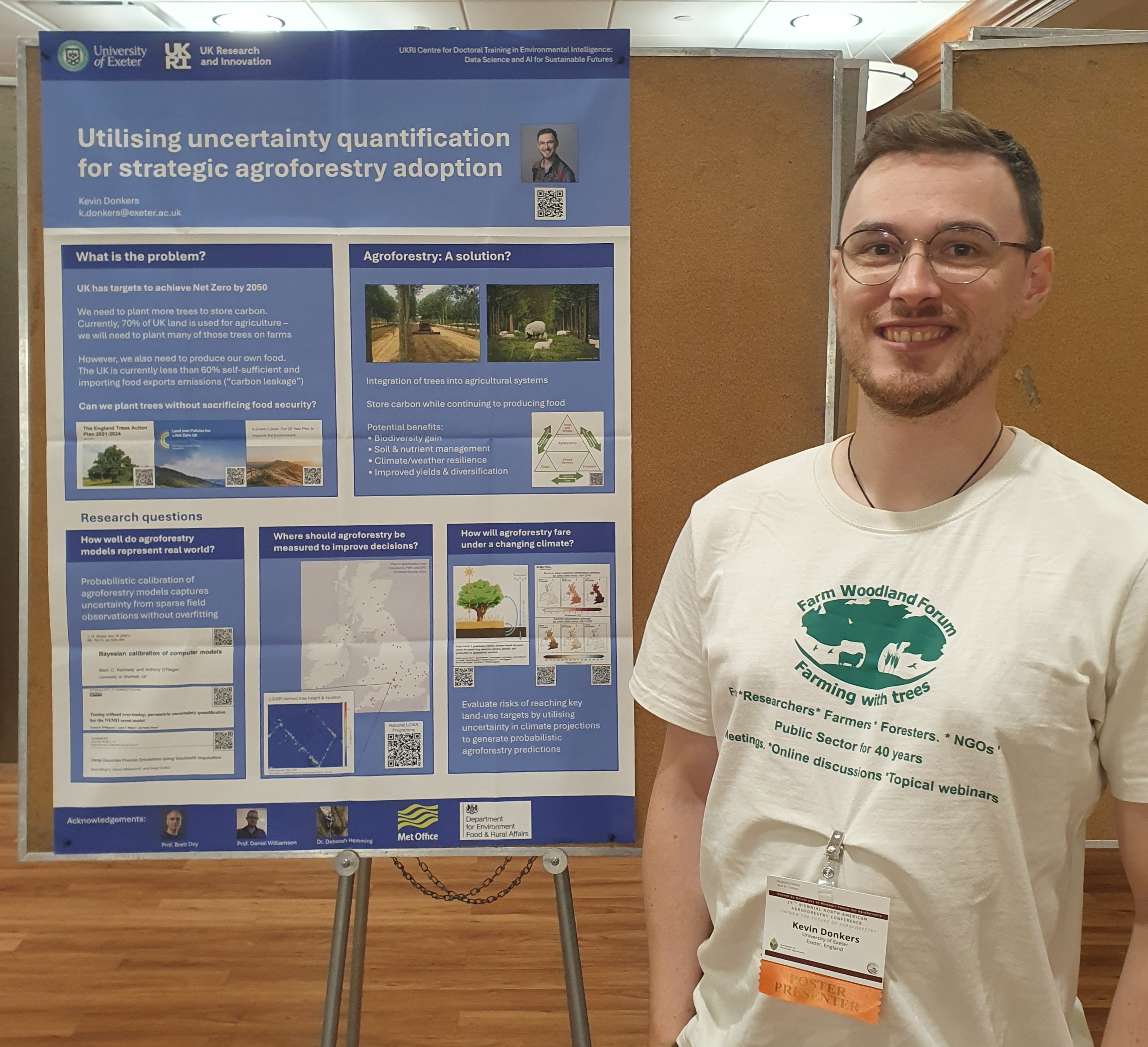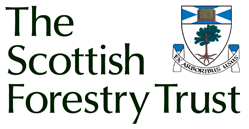The North American Agroforestry Conference 2025
Posted on
In July 2025, The Scottish Forestry Trust supported Kevin Donkers, of the University of Exeter Business School, to present his PhD research at the North American Agroforestry Conference in Missouri, through the Early Career Researchers Conference Fund. Alongside presenting his research on the impacts of UK agroforestry adoption on Net Zero targets, he also took this opportunity to build his professional network with agroforestry researchers in the US.

The conference, hosted by the Centre for Agroforestry at the University of Missouri, occurs biennially and brings together researchers and practitioners working on agroforestry from across North America and beyond. Kevin was able to share his insights from UK agroforestry, get to know agroforestry professionals working in the USA and explore avenues for knowledge exchange between both countries. Of particular interest to Kevin’s research is the work by Savanna Institute and Canopy Farm Management on agroforestry suitability mapping, Canopy Compass. This novel product is a free, online tool which utilises the high resolution, high quality geospatial datasets publicly available for continental America. It shows the suitable and ideal ranges for different tree species relevant to agroforestry, based on a combination of biophysical parameters. Discussions are underway to run such analyses in Europe and the UK.
As well as many talks and opportunities to share research, the conference included a morning of field visits. Kevin visited two commercial farms practising chestnut agroforestry. The first was Cedar Hill Farm, which utilised a more traditional nut orchard setup with spacing to grow wheat as an understory. Given the light requirements of chestnuts, this lower density tree spacing worked well for both nut harvests and wheat yields. With their mature system, they sell wheat to a wholesaler and nuts direct to consumer.
The second farm was Payne Farm, which was much earlier in establishing chestnut trees in a primarily pastoral system. They still farmed some commodity arable crops ('row crops' of soy and maize), but were planting dozens of hectares of chestnuts to transition the farm to predominantly agroforestry, focussing on beef cattle, sheep and pigs. A noteworthy detail of their tree protection setup was the use of fibreglass tree guards wrapped with aluminium wire and strung between guards as an electric fence, kept live at all times. This deterred the animals from knocking over the tree guards while allowing them to graze right up to the base of the growing trees, minimising the requirement for weed control during tree establishment and maximising the area of grazing available to animals. This system was developed by Payne Farms in collaboration with agroforestry services provider Trees for Graziers, and Kevin is in discussion with organisations in the UK to bring such innovations to farmers adopting agroforestry on these shores.
With the support of The Scottish Forestry Trust, Kevin had the means to broaden his professional network to both agroforestry practitioners and researchers in multiple countries, and explore the potential to collaborate on future projects. As he approaches the final months of his PhD, this was a perfect opportunity to explore future opportunities for employment and build professional connections.
